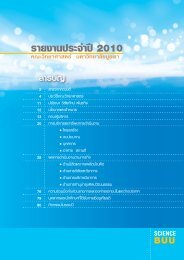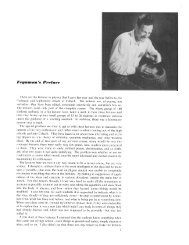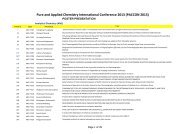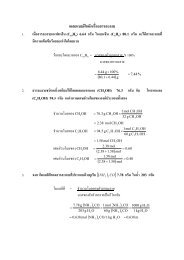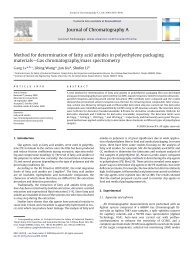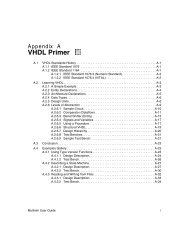USER MANUAL SWAN Cycle III version 40.72A
USER MANUAL SWAN Cycle III version 40.72A
USER MANUAL SWAN Cycle III version 40.72A
Create successful ePaper yourself
Turn your PDF publications into a flip-book with our unique Google optimized e-Paper software.
Chapter 2<br />
General definitions and remarks<br />
2.1 Introduction<br />
The purpose of this chapter is to give some general advice in choosing the basic input for<br />
<strong>SWAN</strong> computations.<br />
<strong>SWAN</strong> is a third-generation wave model for obtaining realistic estimates of wave parameters<br />
in coastal areas, lakes and estuaries from given wind, bottom and current conditions.<br />
However, <strong>SWAN</strong> can be used on any scale relevant for wind-generated surface gravity<br />
waves. The model is based on the wave action balance equation with sources and sinks.<br />
An important question addressed is how to choose various grids in <strong>SWAN</strong> (resolution, orientation,<br />
etc.) including nesting. In general, we consider two types of grids: structured<br />
and unstructured. Structured grids may be recti-linear and uniform or curvi-linear. They<br />
always consist of quadrilaterals in which the number of grid cells that meet each other in<br />
an internal grid point is 4. In unstructured grids, this number can be arbitrarily (usually<br />
between 4 and 10). For this reason, the level of flexibility with respect to the grid<br />
point distribution of unstructured grids is far more optimal compared to structured grids.<br />
Unstructured grids may contain triangles or a combination of triangles and quadrilaterals<br />
(so-called hybrid grids). In the current <strong>version</strong> of <strong>SWAN</strong>, however, only triangular meshes<br />
can be employed.<br />
Often, the characteristic spatial scales of the wind waves propagating from deep to shallow<br />
waters are very diverse and would required to allow local refinement of the mesh near the<br />
coast without incurring overhead associated with grid adaptation at some distance offshore.<br />
Traditionally, this can be achieved by employing a nesting approach.<br />
The idea of nesting is to first compute the waves on a coarse grid for a larger region and<br />
then on a finer grid for a smaller region. The computation on the fine grid uses boundary<br />
conditions that are generated by the computation on the coarse grid. Nesting can be<br />
repeated on ever decreasing scales using the same type of coordinates for the coarse computations<br />
and the nested computations (Cartesian or spherical). Note that curvi-linear grids<br />
3





